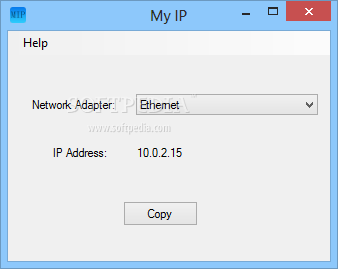
It is recommended that you change or disable your firewall settings.įor maximum throughput, one Ethernet interface per USRP2 is recommended, although multiple devices may be connected via a Gigabit Ethernet switch. On some systems, the firewall will block UDP broadcast packets.
NO IP DUC MAC SOFTWARE
Note: When using UHD software, if an IP address for the USRP2 is not specified, the software will use UDP broadcast packets to locate the USRP2. You can discover the names of the network interfaces in your computer by running ifconfig without any parameters: ifconfig -a Note that interface is usually something like eth0. On a Linux system, you can set a static IP address very easily by using the 'ifconfig' command: sudo ifconfig 192.168.10.1 You will need to configure the host's Ethernet interface with a static IP address to enable communication. The default IP address of the USRP2 is 192.168.10.2. The USRP2 communicates at the IP/UDP layer over the gigabit Ethernet. However, a 10/100 Mbps interface can be connected indirectly to a USRP2 through a Gigabit Ethernet switch. The USRP2 only supports Gigabit Ethernet and will not work with a 10/100 Mbps interface. When in safe-mode, the USRP-N device will always have the IP address 192.168.10.2.įor more information on using external tools to unbrick your device when even this fails, see Unbricking an N-Series Device. Continue to hold-down the button until the front-panel LEDs blink and remain solid. To boot into the safe image, hold-down the safe-mode button while power-cycling the device. The safe-mode button is a pushbutton switch (S2) located inside the enclosure. Once booted into the safe image, the user can once again load images onto the device.
NO IP DUC MAC SERIES
Fortunately, the USRP-N Series can be booted into a safe (read-only) image. Its possible to put the device into an unusable state by loading bad images. Use this number to select the correct FPGA image for your device. Determine the revision number from the sticker on the rear of the chassis. Note: Different hardware revisions require different FPGA images. The USRP will drop off the network for a brief moment and reboot. If you immediately want to apply this image, add the reset argument: uhd_image_loader -args="type=usrp2,addr=,reset" Use custom-built images: uhd_image_loader -args="type=usrp2,addr=" -fw-path="" -fpga-path="" Use default images: uhd_image_loader -args="type=usrp2,addr=" This ensures that when the device reboots, it has a compatible set of images to boot into. When updating images, always burn both the FPGA and firmware images before power cycling.
NO IP DUC MAC UPDATE
The USRP-N Series can be reprogrammed over the network to update or change the firmware and FPGA images. Load the Images onto the On-board Flash (USRP-N Series only) Use the card burner tool (Windows) /lib/uhd/utils/usrp2_card_burner_gui.py
NO IP DUC MAC MAC OS
The list option has been implemented on Linux, Mac OS X, and Windows. The list result will filter out disk partitions and devices too large to be the sd card. Use the -list option to get a list of possible raw devices. usrp2_card_burner.py -dev=/dev/sd -fpga=

Use the card burner tool (UNIX) sudo /lib/uhd/utils/usrp2_card_burner_gui.py Cards can have unexpected timing characteristics.įor these reasons, we recommend that you use the SD card that was supplied with the USRP2.Cards can be SDHC, which is not a supported interface.However, certain types of SD cards will not interface with the CPLD: Warning! It is possible to use 3rd party SD cards with the USRP2. Make sure that -dev= specifies the SD card. If you specify the wrong device node, you could overwrite your hard drive. Warning! Use usrp2_card_burner with caution. Load the Images onto the SD card (USRP2 only) Up to 50 MHz of RF BW with 8-bit samples.Up to 25 MHz of RF BW with 16-bit samples.



 0 kommentar(er)
0 kommentar(er)
